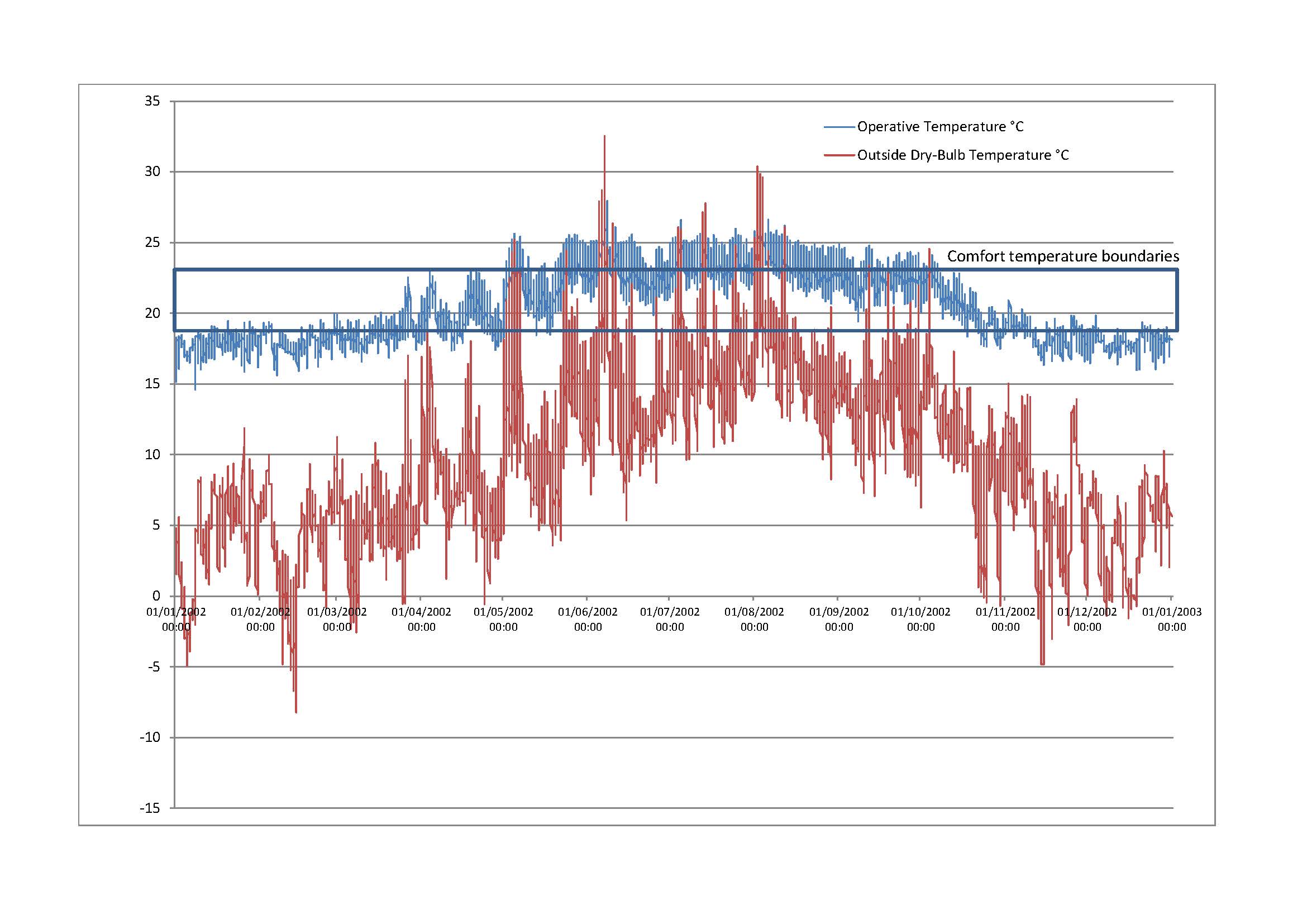Energy
The energy performance of the case-study buildings was estimated in order to evaluate the refurbishment options and to calculate the total housing cost. The energy use for both building and user-related sources was calculated by means of dynamic thermal performance simulation. The energy use was then simulated after the application of the proposed, combined solutions.
DesignBuilder software was used for the thermal simulation, because it can generate a range of environmental performance data such as energy consumption and internal comfort data. The software calculates heating and cooling loads using the ASHRAE-approved ‘Heat Balance’ method implemented in EnergyPlus. The actual data for the building’s size and construction were used, the location climate data were input and occupancy data were based on the building’s function
Inputs
For every energy consumption calculation, the way a building is constructed and operated needs to be specified in terms of inputs. When comparing current and new energy demand, it is assumed that the usage patterns will not change significantly. A typical apartment is used in calculations and its energy savings can be extrapolated to the entire block. In apartment buildings, the ‘typical’ apartment is usually a middle apartment on a middle floor (Figure 1).
Energy consumption in dwellings is affected by household demographics. For this study, a four-person family (two parents and two children) was considered, as it is the largest percentage in the demographics of the case study. The different type of inputs are summarised in Table 1. They concern the location, building geometry and zones, occupancy, building construction and systems, etc. Standard values are used for user behaviour and loads, such as for lighting and domestic hot water (DHW).
Parameter | Inputs |
Location | Netherlands |
Orientation | Depending on specific building |
Geometry and zones | Every room as a different zone, according to activity (bedroom, living room, etc.) |
Schedules and occupancy | Based on zone’s function, for a four-person household |
Apartment type | Middle apartment |
BUILDING ELEMENTS AND THERMAL PROPERTIES | Existing building: according to typical construction and site observation. Refurbishment: according to regulation standards and ambitions |
Openings | Layout: per building and design. Window to wall ratio 30–60% |
Heating | Existing building: gas boiler, efficiency 80% |
Ventilation | Existing building: natural ventilation |
DHW | Same as heating system |
Energy generation | Calculated per apartment, based on the overall available area for PV application. Efficiency 255Wp |
Table 1 Energy simulation inputs
Comfort, Energy demand, Energy cost and Carbon footprint
The simulation resulted in the amount of energy in kWh a dwelling requires per year, including HVAC systems, domestic hot water and appliances. Moreover, the internal temperatures where checked to calibrate the dwelling function and comfort, existing and refurbished, and ensure that overheating is avoided. In the example in Figure 2, the temperature in the winter garden, when it is applied as a refurbishment option, is plotted against the outside temperature, showing how the temperatures in the winter garden remain comfortable for a longer period.
Operative Temperature in the winter garden, compared to the outside temperature
The energy costs, which take into account standing charges and higher prices at peak hours, were calculated to be €0.078/kWh for electricity and €0.42/m3 for gas. VAT then needed to be added to these prices. The prices were used in the simulation of electricity and gas demand, respectively.
| € /unit consumption | Fixed costs |
Gas[1] | 0,42/m3+0,32 /m3= 0,74/m3 | 236,69 |
Electricity[2] | 0,078/kWh+0,12/kWh =0,15 | |
Pellet[3] | 0,06358 € /kWh | |
District heating[4] | 22,27 € /GJ | 465€ |
Table 2 Energy cost for different sources
The savings in CO2 were calculated compared to the original situation (model 0). The CO2 produced in every case was calculated based on the simulated energy demand in kWh. However, the different fuels that are used in every model have different conversion factors kWh to kgCO2eq, according to CO2-emissiefactoren (2017).[5]
- https://www.eneco.nl/
- https://www.eneco.nl/
- 1000kg houtpellets cost 295 euro, Inclusief 21% BTW. Regarding the efficiency, we assume 16,7 MJ/kg. http://www.houtpellets-online.eu/winkel/
- https://www.nuon.nl/media/service/downloads/warmte-tarieven-overig/uitleg-tarieven-stadswarmte-kleinverbruik-2017.pdf
- CO2-emissiefactoren. (2017). Lijst emissiefactoren (List of emission factors). Retrieved 30 April 2018 from co2emissiefactoren.nl/lijst-emissiefactoren/


